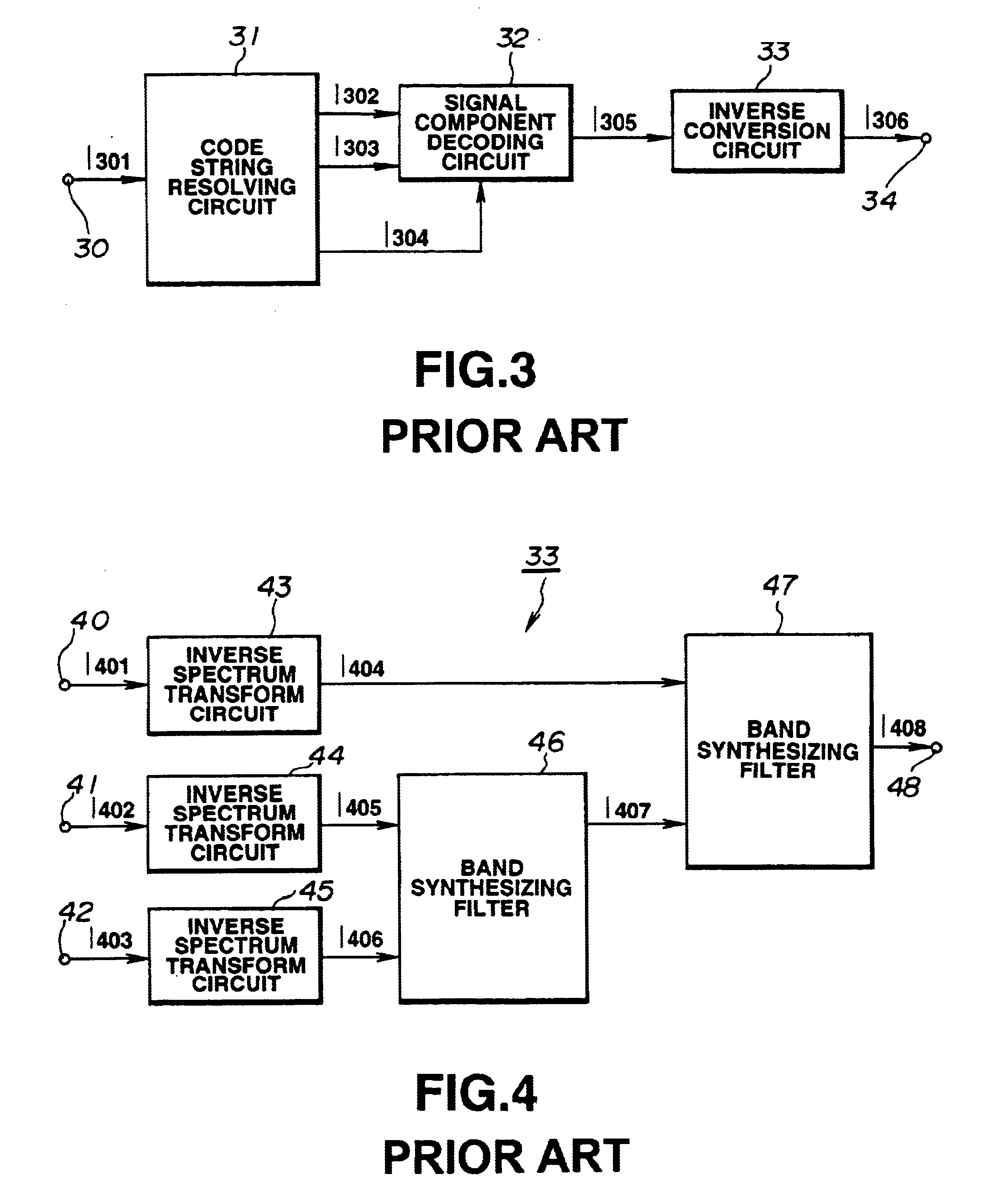Information encoding method and apparatus, information decoding method and apparatus and recording medium
- Summary
- Abstract
- Description
- Claims
- Application Information
AI Technical Summary
Benefits of technology
Problems solved by technology
Method used
Image
Examples
Embodiment Construction
Referring to the drawings, preferred embodiments of the present invention will be explained in detail. In the following description, the parts or components similar to those of the conventional apparatus described above are omitted for clarity.
FIG. 9 shows a configuration of an encoder (encoding apparatus) for carrying out the encoding method for acoustic waveform signals according to the present invention.
The encoder according to an embodiment of the present invention has a quantization step decision circuit 52, a surplus / shortage decision circuit 53 and a surplus data separating circuit 55, for separating part of the encoding information for at least one second frame temporally consecutively or non-consecutively preceding or succeeding a first frame if such part is surplus data which would surpass a pre-set fixed number of bits for the second frame if the input signal for the second frame were encoded using the number of bits which would be required for realizing the required qual...
PUM
 Login to View More
Login to View More Abstract
Description
Claims
Application Information
 Login to View More
Login to View More - R&D
- Intellectual Property
- Life Sciences
- Materials
- Tech Scout
- Unparalleled Data Quality
- Higher Quality Content
- 60% Fewer Hallucinations
Browse by: Latest US Patents, China's latest patents, Technical Efficacy Thesaurus, Application Domain, Technology Topic, Popular Technical Reports.
© 2025 PatSnap. All rights reserved.Legal|Privacy policy|Modern Slavery Act Transparency Statement|Sitemap|About US| Contact US: help@patsnap.com



